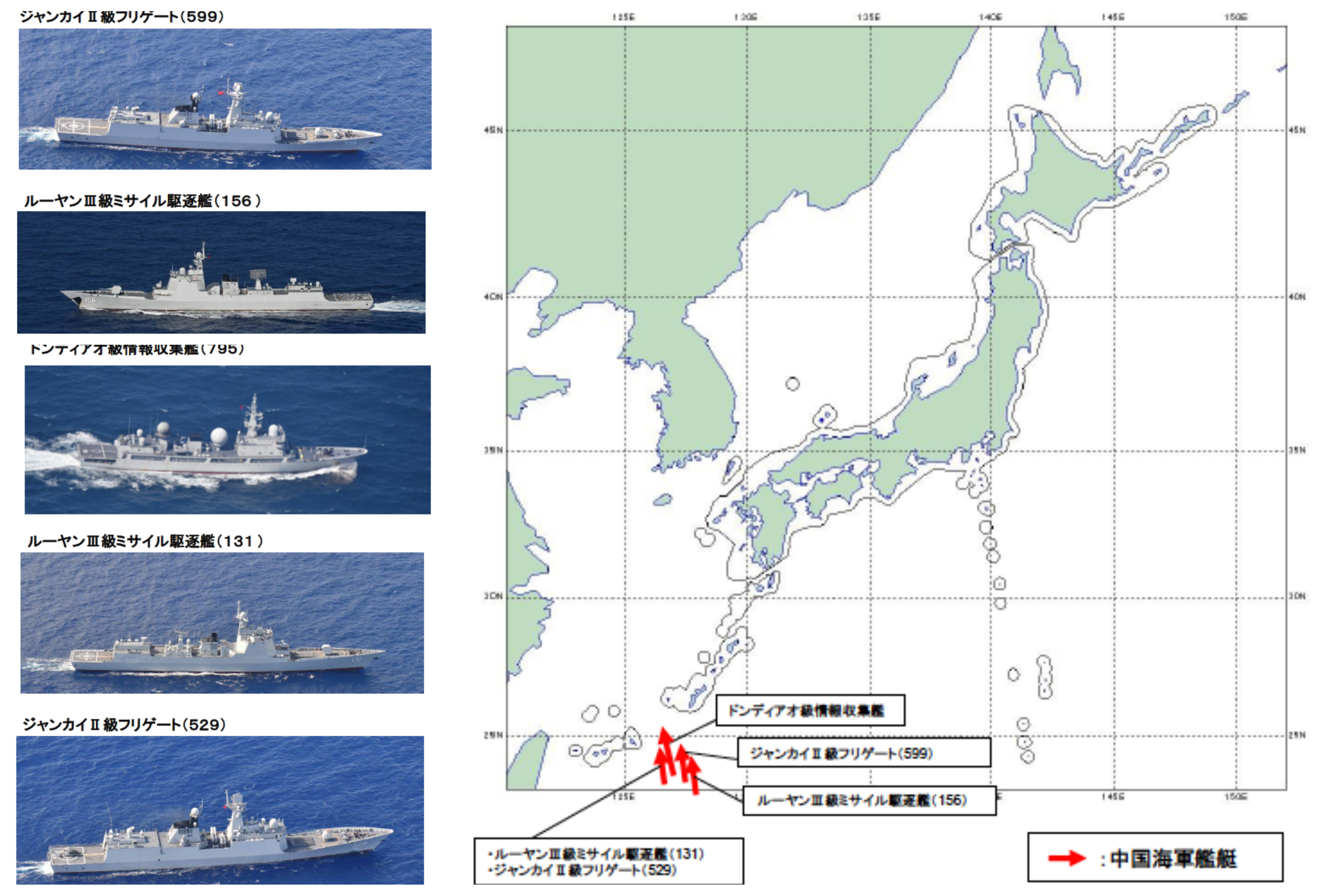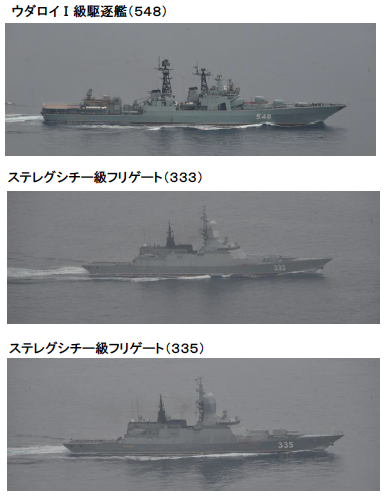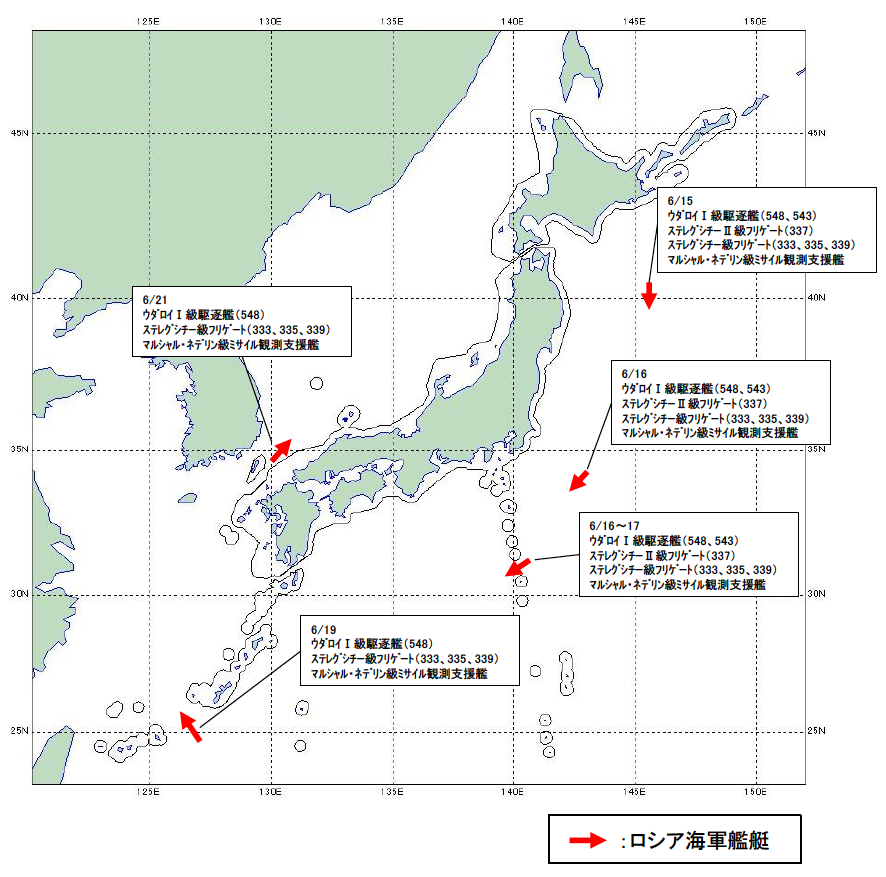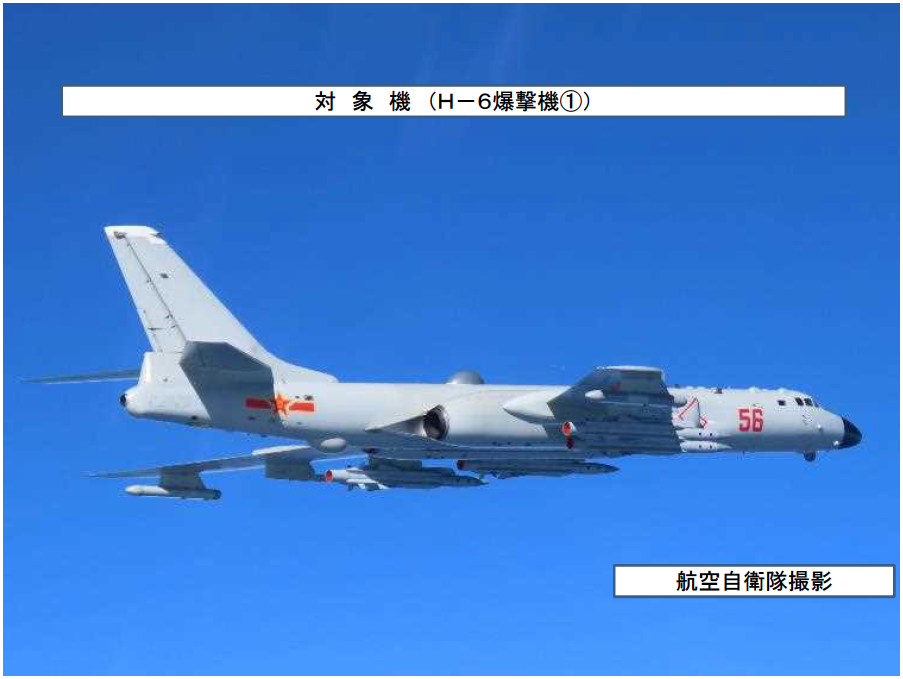
An uptick in Russian and Chinese warship movements near Japan are a part of an ongoing military demonstration toward Tokyo, Japan’s Defense Minister Nobou Kishi said this week.
The People’s Liberation Army Navy and the Russian Pacific fleet have, since mid-June, sent two separate surface action groups around the Japanese home islands.
“The fact that about 10 Russian and Chinese ships sail around Japan on the same route in a short period of time is a display of the military presence of both countries around Japan,” Kishi said.
Seven Russian warships sailed near Hokkaido toward the Izu Islands on June 15. Five of the ships sailed in the waters between Okinawa and Miyakojima toward the East China Sea on June 21. The group sailed through the Tsushima Strait toward the Sea of Japan, almost making a circle of the Japanese archipelago, he said.
On June 12, four Chinese ships sailed through the Tsushima Strait toward the Sea of Japan, two of which sailed through the Tsugaru Strait and the other two through La Pérouse Strait to the Pacific Ocean. Three of these ships have been operating near around the Izu Islands, similar to the movement of the Russian ships, and were moving around the Japanese archipelago,
“The Ministry of Defense will continue to pay close attention to the trends of the Russian Navy and the Chinese Navy in the waters around Japan, and will make every possible effort to carry out warning and surveillance activities in the sea and airspace around Japan,” Kishi said.
In a response to a media questions as to whether the surveillance activities of the Russian and Chinese activities around Japan would involve the U.S., Kishi replied that the surveillance was a Japan Self Defense Force task.

The movement of the Russian and Chinese ships have all been posted on in recent releases by the Joint Staff Office (JSO) of the Japanese Ministry of Defense.
On Tuesday, the JSO issued a release stating that five Russian ships had been sighted at 7 a.m. that day and sailed northeast through the Tsushima Strait into the Sea of Japan.
Hull numbers and images provided corresponded to destroyer RFS Admiral Panteleyev (548), Corvettes RFS Sovershennyy (333), RFS Gromkiy (335), Hero of the Russian Federation Aldar Tsydenzhapov (339) and the missile range instrumentation ship Marshal Krylov. The release included a map showing the earlier movements of the Russian ships around Japan in which destroyer RFS Marshal Shaposhnikov (543) and corvette RFS Gremyashchiy (337) formed part of the group in those movements.
All the ships belonged to the Russian Pacific Fleet, which has been conducting a large scale exercise since June 3. The release stated that the Japan Maritime Self Defense Force (JMSDF) destroyer JS Amagiri (DD-154) and the fast attack craft JS Otaka (PG-826) monitored the Russian ships.
Marshal Shaposhnikov, Gremyashchiy and the tanker Pechanga, which had earlier replenished the seven Russian surface ship group operating around Japan made a port visit to Manila, Philippines, from Tuesday to Wednesday, according to a social media post by the Russian Embassy in the Philippines.
As of Friday afternoon, Japan has not reported any sightings of the three ships in the East China Sea since their departure from the Philippines, indicating the ships are either operating in the Philippine Sea or the South China Sea.
Chinese ships and aircraft have been also been heavily operating around Japan.
Two People’s Liberation Army Navy (PLAN) destroyers and a replenishment ship were sighted sailing west between Smith Island and Torishima in the Izu Islands, according to a Japanese release Tuesday. Hull numbers and images provided identified the ships as destroyers CNS Lhasa (102) and CNS Chengdu (120) and replenishment ship CNS Dongpinghu (902).
These were the same ships cited in previous JSO releases and included a map showing their movements since the first sighting on 12 June, according to the Tuesday release. The release also stated that the JMSDF destroyer JS Makinami (DD-112) was monitoring the PLAN ships.

On Wednesday, a JSO release stated that a PLAN corvette had been sighted at 9 a.m., sailing south in the waters about 220 km north of Yonaguni Island, and later on that day, at 11p.m., a PLAN destroyer was sighted sailing south in around 210 km north of Yonaguni Island. Both ships subsequently made separate passages between Yonaguni Island and Taiwan to sail towards the Pacific Ocean.
Hull numbers and images provided identified the ships as destroyer CNS Xi’an (153) and corvette CNS Xiaogan (615).
The release stated that the destroyer JS Abukuma (DE-229) and a JMSDF P-1 Maritime Patrol Aircraft of Fleet Air Wing 1 based at Kanoya Air Field, Kyushu, conducted surveillance of the PLAN ships.
A second release on Wednesday stated that on 2 .m. Tuesday, a PLAN destroyer and two frigates were sighted sailing southeast in area approximately 280 km northwest of Kume Island, Okinawa Prefecture and, subsequently, sailed through the Miyako Strait into the Pacific Ocean.
Hull numbers and images provided correspond to destroyer CNS Taiyuan (131) and frigates CNS Zhoushan (529) and CNS Anyang (599).
The release also stated that a PLAN destroyer was sighted sailing southeast in the area around 160 km northeast of Miyako Island and subsequently transited the Miyako Strait to sail into the Pacific Ocean around 6 a.m. Wednesday. Hull number and image provided correspond to the destroyer CNS Zibo (156). The release stated that the replenishment ship JS Tokiwa (AOE-423), minesweeper JS Shishijima (MSC-691) and JMSDF P-3C Orion MPAs of Fleet Air Wing 5 based at Naha Air Base, Okinawa, monitored the PLAN ships.
On Friday, the JSO issued a release stating that Xi’an was sighted at 6 a.m. 70 km southwest of Yonaguni Island before the ship sailed north in the area between Yonaguni Island and Taiwan and sailed towards the East China Sea. The release stated the PLAN ship was monitored by Tokiwa.
A second release on Friday stated that a Dongdiao class surveillance ship with the hull number 795 had been sighted sailing northwest at an area 150 km east of Miyako Island around 9 p.m. Thursday, and, at the same time, Taiyuan and Zhoushan had been sighted sailing northward in an area about 130km south of Miyako Island.
This was followed by a 10 p.m. sighting in an area about 130km south of Miyako Island of Anyang sailing northeast and of Zibo sailing north in an area about 200km southeast of Miyako Island. Subsequently all the PLAN ships sailed northwest in the Miyako Strait and entered the East China Sea. Destroyer JS Asahi (DD-119) along with Shishijima and a JMSDF P-3C Orion MPA of Fleet Air Wing 5 monitored the PLAN ships.
Chinese aircraft have also been active around Japan as on Thursday the JSO issued a release stating that three People’s Liberation Army Air Force (PLAAF) H-6 bombers flew in from the East China Sea in the afternoon that day, flying through the Miyako Strait into the Pacific Ocean where the bombers conducted separate circuits before joining together again to fly through the Miyako Strait and back into the East China Sea. Images in the release showed that two of the H-6s were carrying YJ-12 anti-ship cruise missiles.
The release stated that the Japan Air Self-Defense Force’s (JASDF) Southwestern Air Defense Force’s fighter aircraft was scrambled and monitored the PLAAF planes.
On Friday, the JSO issued a release stating that on that morning a Chinese Y-9 electronic intelligence aircraft flew from the East China Sea and through the Miyako Strait to enter the Pacific Ocean and then made two turns before passing through the Miyako Strait to enter the East China Sea. JASDF fighter aircraft were scrambled and monitored the Chinese plane, stated the release.

In other developments, the Royal Australian navy wrapped up exercise Sea Explorer 2022 on June 16, according to Defence Department release on Monday. The exercise was for the Australian Amphibious Force (AAF) to verify its capability to deploy as an integrated force and involved the landing helicopter dock HMAS Adelaide (L01) with ground and aviation units of the Australian Army. Also participating was the U.S landing Ship dock USS Ashland (LSD-48).
Capt. Phillipa Hay, commander of the Australian Amphibious Task Force, said in the release that Sea Explorer 2022 was also enriched by the presence of the United States Navy’s Japan-based USS Ashland, with AAF forces embarked on it.
“USS Ashland is one of our nearest and closest coalition partners. Together, we have demonstrated our ability to interchange and operate as a cohesive force to develop and deliver an amphibious effect,” Hay said.
“The AAF is now certified to deploy on Indo-Pacific Endeavour, Defence’s premier deployment into the region and beyond, where we will be enhancing our interoperability and relationships with key partners and friends in the region.”
Indo-Pacific Endeavour is the Australian Defence Force’s annual presence and partnership deployment spearheaded by one of its Canberra-class LHDs to the Indo-Pacific region. On odd number years the deployment focuses on Southeast and Northeast Asia while even number years focus upon the Pacific Islands. No date has been released yet for the deployment but it is expected to be a key part of the new Australian government’s goal of strengthening Australia’s partnership with the Pacific islands and rolling back China’s influence there.
Meanwhile, Adelaide’s sister ship, HMAS Canberra (L02), accompanied by frigate HMAS Warramunga (FFH152) is inbound to Hawaii for the RIMPAC 2022 exercise, having conducted a replenishment at sea with USNS Yukon (T-AO-202).





